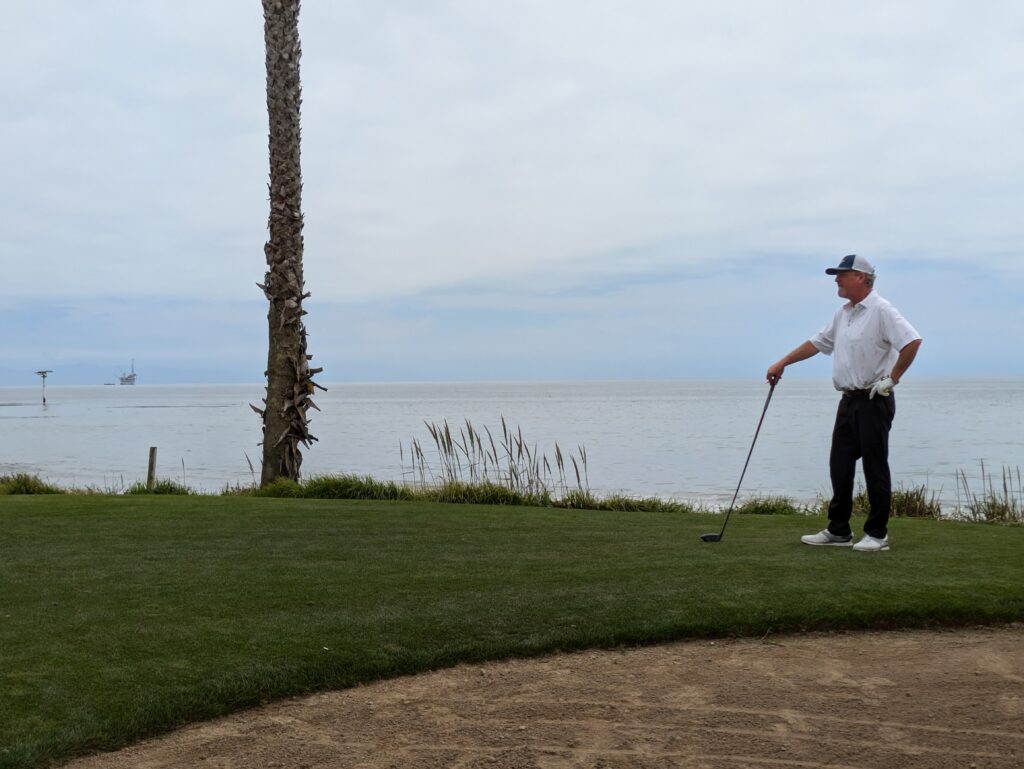Reflections on Breakfast Balls #4 – The Western Invintational @ Sandpiper GC
What a rollercoaster of emotions this tournament at Sandpiper was. This last weekend was something that provided more than just a test of skill—it was a profound journey of personal growth and perspective.

For starters, this tournament taught me a lot about humility. I started off at the 10th hole with a decent drive, securing a bogey. All things considered, I felt pretty good. Then on the 11th hole, I managed a birdie and thought, “Wow, this is going to be a great tournament.” Little did I know, the course had different plans for me. As I reached the 16th hole and scored a brutal 13, my confidence began to wane.
Yet, it wasn’t all about the score. One of the most significant takeaways was how to manage both the highs and lows on the course. Mark and I always stress how crucial it is to embrace both the good and the bad experiences in golf, and this tournament was a shining example of that. I realized that negative thoughts can heavily impact performance. When I let the frustration consume me, I lost focus and ultimately control over my game. It was a harsh but necessary lesson in mental fortitude.
But perhaps the most meaningful aspect of this experience was sharing the journey with my son, Lucas. There’s something profoundly special about having your son by your side, guiding you, and offering support, even when things aren’t going well. Lucas, who was my caddy, provided not just technical advice but emotional support. He was there during my highs and, most importantly, my lowest moments.
I remember on that menacing par-5 13th hole. I was initially reluctant to take the shot Lucas suggested, a 165 yard 6 iron over a forced carry and a bunker protecting the elevated green. From where I stood the green looked as if it was floating out over the Pacific. He encouraged me and, with his guidance, I managed to pull off the shot. Leaving it 12 feet from the pin. We celebrated together, and it felt like a shared victory.
However, the next day, I struggled on the same hole, leading to another big number. My subsequent missteps at the 14th hole further dampened my spirits. If not for Lucas’s unwavering support, there were times I considered walking off the course out of pure embarrassment.
One of the biggest lessons from this round was learning to accept support, especially from family. Lucas’s encouragement and guidance were vital. His presence reminded me of the importance of staying grounded and maintaining perspective, even in challenging circumstances.

Another valuable lesson was resilience. I faced the shanks, yips, and tops—all within the last nine holes. Mentally, I felt drained and defeated. But golf, much like life, demands resilience. It pushes you to pick yourself up after every setback, to reflect on your mistakes, and most importantly, to keep moving forward.
After the tournament, despite my initial disappointment, reflecting on the entire experience offered a new perspective. The scores might not have been in my favor, but the memories and lessons gained were invaluable. Sharing meaningful moments with Lucas, feeling uplifted by his presence, and acknowledging my own emotional and physical limits enhanced my appreciation for the game.
Ultimately, whether it’s golf or life, it’s about the journey, the learning, and the shared experiences. The laughs, the frustrations, the wins, and the losses—all form an intricate tapestry that makes it all worthwhile. I’m eager to embrace my next tournament with renewed wisdom and, of course, the support of my incredible son by my side.
Instagram: @holyduffer


